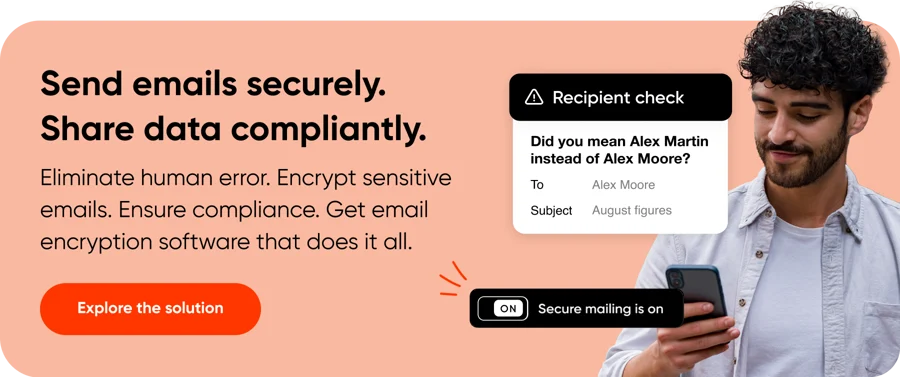In the realm of data protection and information security, the General Data Protection Regulation (GDPR) and the forthcoming NIS2 directive have ushered in a new era of responsibilities for Chief Information Security Officers (CISOs) and security professionals.
The methods in which employees handle sensitive data and share it by email is vital in ensuring compliance with data protection legislation. Information must be sent securely - so how important is Transport Layer Security (TLS) in supporting compliance with GDPR and where does it fit within the broader landscape of secure email communication?
A refresher: Protection of personal data under the GDPR
The GDPR sets stringent requirements for the processing of personally identifiable information (PII), placing the onus on organizations to implement robust technical and organizational measures that ensure the confidentiality, integrity, and availability of sensitive data.
TLS plays a pivotal role in this context by providing encryption for data in transit, safeguarding it against unauthorized access. While TLS contributes to the protection of personal data during email transmission, it addresses only one part of the GDPR's comprehensive mandate.
What are the consequences of non-compliance with the GDPR?
Organizations face significant repercussions for failing to meet the obligations set by GDPR, both in terms of reputational damage and financial implications.
Today, consumers are more aware of their privacy rights, and the erosion of trust caused by non-compliance leads to strained customer relationships and a tarnished corporate image.
Financial implications of non-compliance include potential compensation claims from individuals affected by data breaches and substantial fines imposed by supervisory authorities. To mitigate these risks, organizations must go beyond basic encryption and consider other aspects of email security.
What is NIS2?
The NIS2 directive, set to take effect by October 2024, extends obligations to entities within critical sectors, mandating secure communication solutions. Article 21 of the directive highlights the importance of encryption and secure communication platforms, particularly for essential service providers.
While TLS aligns with these requirements by encrypting data during transmission, it's important to recognize that TLS alone does not comprehensively address the multifaceted demands of GDPR compliance.
The limitations of TLS
TLS does enhance email security by encrypting data in transit. However, it also has some limitations.
TLS secures the communication channel between servers but does not provide robust server authentication, leaving room for potential vulnerabilities.
Furthermore, TLS does not guarantee recipient authentication, meaning that the intended recipient's identity is not definitively verified. In the simplest terms, even if your email is sent securely, there is no guarantee it is accessed by the intended recipient.
These limitations underscore the need for additional layers of security to ensure GDPR compliance, particularly when dealing with highly sensitive information.
Beyond TLS: How to comply with GDPR
Adopting protocols like Domain Name System-based Authentication of Named Entities (DANE) enhances server authentication. However, the journey toward comprehensive compliance continues.
For communication involving sensitive data, measures such as robust two factor authentication and access controls are vital. Implementing supplementary solutions, such as email data protection solutions which enhance traditional email with intuitive security functionality, ensures that the principles of GDPR are upheld.
In the intricate landscape of data protection and information security, TLS emerges as a foundational element in the journey toward GDPR compliance. While TLS contributes by encrypting email communication, it lacks essential data protection elements. Achieving comprehensive compliance necessitates a multi-layered approach that addresses server authentication, recipient verification, and access controls. Organizations must seize the opportunity to bolster their email security arsenal with supplementary measures that align with the intricate web of obligations set forth by GDPR and NIS2. By doing so, they not only safeguard sensitive data but also pave the way for a more secure digital future.
Learn more about how Zivver helps your organization comply with GDPR, CCPA, DPA and more.





